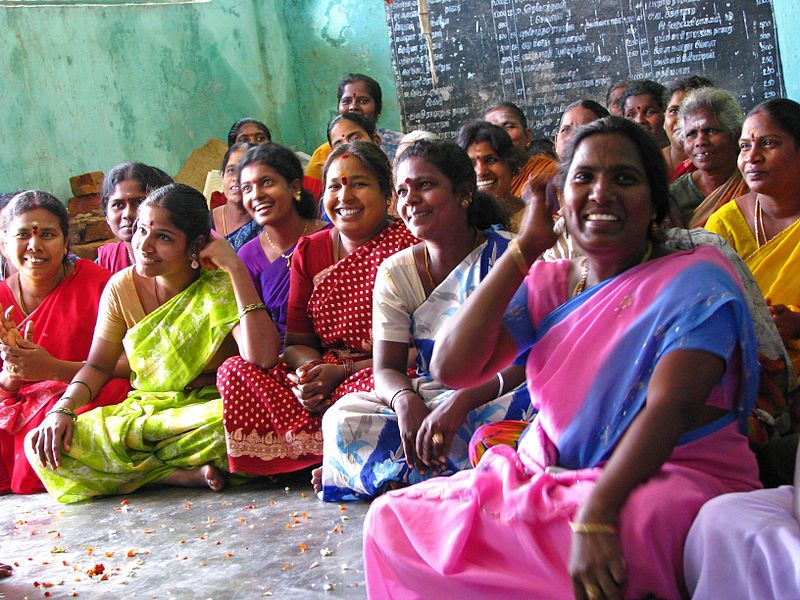With the passage of the Nari Shakti Vandan Adhiniyam, 33% of all seats in the Lok Sabha and state legislatures is to be reserved for women. But there is a rider buried in the details of the bill. The Act would only get implemented after the next census and delimitation gets over, which will not be before 2026. In all probability, it will be very difficult to implement this Act before 2029. Many things can happen between then and now. And it remains to be seen whether the present government will be able to get any benefit of this legislation through such premature euphoria. Also, it does not explain why the bill had to be brought in such hurry in this session, when clearly the intention to implement it earnestly was lacking.
Without doubt, this is a historic moment. No society can truly call itself inclusive and modern if it denies women their rightful share. It cannot be denied that Indian women have been victims of historical injustice. For centuries, they were denied access to education, confined to domestic roles and treated as mere chattel. In the first Lok Sabha their representation was a mere 4.5% which has now increased to 15%. But clearly this is not enough and women as a group require the extra push that the quota system will give them. This principle has been accepted by each and every political force in the country. But the manner in which the bill was formulated leaves much to be desired.
While the bill rightly reserves seats for SC/ST women, there is no such provision for OBC women. It must be put on record that the OBCs comprise more than half of the total population of the country. Why is that Bahujan women were not given adequate representation in this bill? It is understandable that Muslim women similarly do not find any mention in the bill as the Constitution does not recognize any religious quota. But there is no such bar on making provisions for OBCs and indeed Parliament made special provision for them during the VP Singh government.
Since the majority of Muslims are OBCs, such women could have found a place within the OBC quota. Of late, the prime minister himself has on many occasions reminded the nation that Pasmandaas (Muslim OBCs) have been the victims of discrimination by upper caste Muslims and that there is a need to ameliorate their situation. More specifically, he and his party have reminded the nation of the “plight of Muslim women” and have sought to liberate them from the tyranny of Muslim men by doing away with “evil practices like triple talaq”. But despite such pious pronouncements, if the OBCs and Muslims within them do not find a mention in the proposed women’s quota, then one can only conclude that the government was just been bluffing all along.
Decades have passed since the debate started over women’s reservation. Over these 25 years, Indian feminism has evolved from being largely an urban upper caste caucus to becoming more inclusive by accommodating the views of Dalit and Bahujan women. Any understanding of women’s empowerment today is incomplete without acknowledging the intersectionality of caste and gender. The position and situation of all women is not the same; Dalit and OBC women are still more vulnerable as compared to upper caste women. While the latter can employ different kinds of social and cultural capital to scale the ladder, the same cannot be said about many women from Bahujan backgrounds. The OBC Muslim women are the most vulnerable, battling discrimination within the community as well as the scourge of anti-Muslim phobia outside. In denying such women their due share within the women’s quota, the government is not playing just.
For this reason alone, the bill should have been opposed by all feminist organizations of the country. Diversity and inclusion are laudable principles. After all, women’s organization have been demanding such a bill in the very name of inclusion. How can they now stay silent when Bahujan women have been excluded from the provisions of women’s quota? If they do not oppose it, then it becomes amply clear that Indian feminists only pay lip service to the principle of intersectionality. Supporting women’s reservation in its current form will only mean that they have no sensitivity when it comes to the political aspirations of Bahujan women.
Bahujan parties have always demanded the inclusion of OBC and Muslim women sub-quota. But since most of them have limited the principle of social justice to their respective families, they do not wield the same clout that they used to in their heydays. Moreover, as representatives of dominant castes within the OBCs, they have alienated the lower OBCs with their continued arrogance. The result is that today it is the BJP-led government which commands the loyalty of a large numbers of OBC votes. In fact, it will not be an exaggeration to say that the present government has been largely voted to power because of the support of OBCs. The women’s reservation issue, therefore, also puts the government in a tricky situation as it excludes its largest social base. Its success in the next elections will depend on how it mollifies this section of loyal voters.
No one is opposed to women’s reservation. In fact, they should be provided 50% reservation, in accordance with their population. But one is certainly opposed to the present format which excludes the majority of women of this country from its ambit. Not including Bahujan women is nothing but plain injustice. If this omission is not corrected, then it will only mean that the move is designed to give reservation to upper caste Hindus. Only this time, it is being done in the name of women!
The writer is a Delhi-based columnist.
Related:

